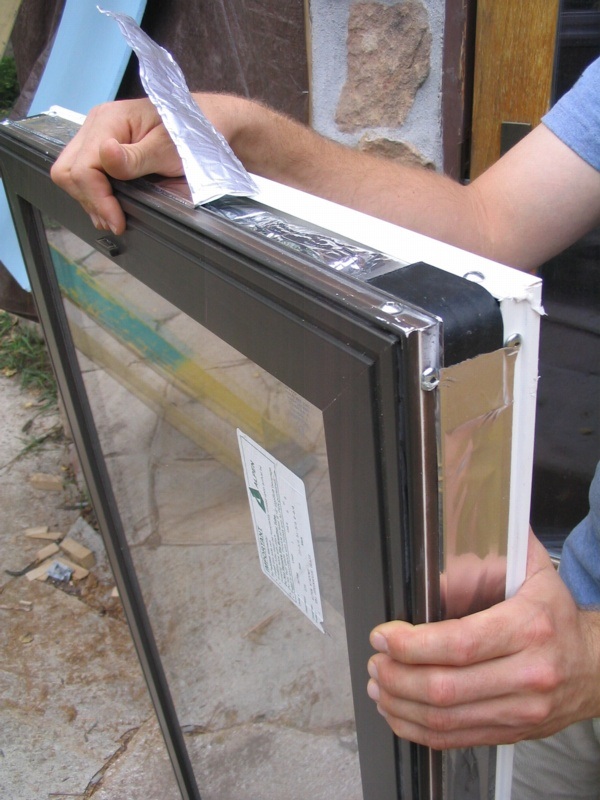Blog Post
Making the Case for Triple-Glazed Windows

It won't surprise many of my readers to learn that I'm a fanatic about energy conservation and efficiency. That goes back more than 30 years to the mid-70s. During those years I've paid a lot of attention to windows--and seen dramatic improvement in window performance.
Before the 1973 energy crisis, the best windows were made from two layers of glass, usually separated by a quarter-inch air space. Then some researchers at MIT invented a very thin, transparent metallic coating that significantly reduced heat loss by reducing the amount of heat the glazing would radiate outward. These low-emissivity, or low-e, coatings were on suspended plastic film between the layers of glass (the original MIT approach) or coated directly onto the glass.
Other researchers figured out that if the air between the layers of glass were replaced with a lower-conductivity gas, further reductions in heat loss could be achieved. Argon has been most commonly used for this, though the best windows today use krypton or even xenon gas-fill.
With low-e coatings and argon gas-fill, and by increasing the space between the layers of glass to 1/2 or 5/8 inch, the center-of-glass insulating value is increased to about R-4. And that's where the performance of U.S. windows pretty much plateaued. If heat flow through the glazing edges and frames is factored in to get an average R-value for the entire window (unit R-value) performance is lower.
But even R-4 (that center-of-glass R-value) isn't very high in a reasonably well-insulated house--say with R-25 walls and an R-40 ceiling. How do we go significantly beyond R-4 windows?
To achieve performance much better than R-4 you have to use additional layers of glazing and additional low-e coatings. For years, whenever I've been at a conference with a trade show of building products, I've asked window manufacturers when they will introduce triple-glazed windows. I've gotten a lot of blank stares.
SUPPORT INDEPENDENT SUSTAINABILITY REPORTING
BuildingGreen relies on our premium members, not on advertisers. Help make our work possible.
See membership options »"We can't do that," I've been told. "They won't hold up." "The technology is untested." "There isn't enough demand." "Seals will fail."
With that "can't do" attitude in my mind, I was surprised while traveling in Sweden two years ago to learn that triple-glazed windows have been, essentially, required by code in that country since 1976. I didn't see any modern windows in Sweden that were not triple-glazed. It's standard practice. Manufacturers have figured out how to make products that perform just fine--and do a far better job than U.S. windows in controlling heat loss and unwanted heat gain.
This is finally beginning to change here. Canadian window manufacturers, including Accurate Dorwin, Thermotech, Duxton, and Loewen, have made triple-glazed windows for years, and these windows are increasingly making their way into the U.S. The U.S. is way behind Canada, but a few of our manufacturers are dipping their toes into the triple-glazed window world, including a number of manufacturers of vinyl replacement windows.
The U.S. company embracing triple glazing most actively today is Serious Windows, the company created when Serious Materials bought window technology leader Alpen Windows two years ago. Serious Windows then garnered national attention a year ago when it purchased two window manufacturers, one in western Pennsylvania and another in Chicago, that had abruptly folded. (One closing, you might remember, made the national news when it resulted in a demonstration and occupation by laid-off workers.) These factories are now being converted to produce high-performance, triple-glazed windows.
Serious Windows is the only company I'm aware of that uses a combination of low-e coatings on the glass and suspended low-e films. Their top-performing window with two suspended low-e films, low-e glass, and xenon gas-fill (even better than krypton) achieves an industry-leading unit insulating value of R-13. This window uses low-iron glass to achieve a remarkably high "visible transmittance" of 62%.
Serious Windows almost always provides different glazings for different orientations in a building, which further improves overall energy performance. This is a really important strategy. On the south side of a house, it makes sense for windows to be able to transmit more sunlight for passive solar heating, while on the east and west sides, minimizing solar heat gain to prevent overheating is important. This "tuning" of glazings by orientation makes a great deal of sense and should be standard practice with window selection.
I believe that within ten years, triple-glazed windows will be standard practice in colder regions of the U.S., and even mainstream window manufacturers, such as Andersen, Marvin, and Jeld-Wen, will provide easy options to enable builders to tune windows by orientation. We will all benefit.
I invite you to share your comments on this blog. Is the future going to be triple glazing? You can also follow my musings on Twitter.
Published December 7, 2009 Permalink Citation
(2009, December 7). Making the Case for Triple-Glazed Windows. Retrieved from https://www.buildinggreen.com/blog/making-case-triple-glazed-windows



Add new comment
To post a comment, you need to register for a BuildingGreen Basic membership (free) or login to your existing profile.